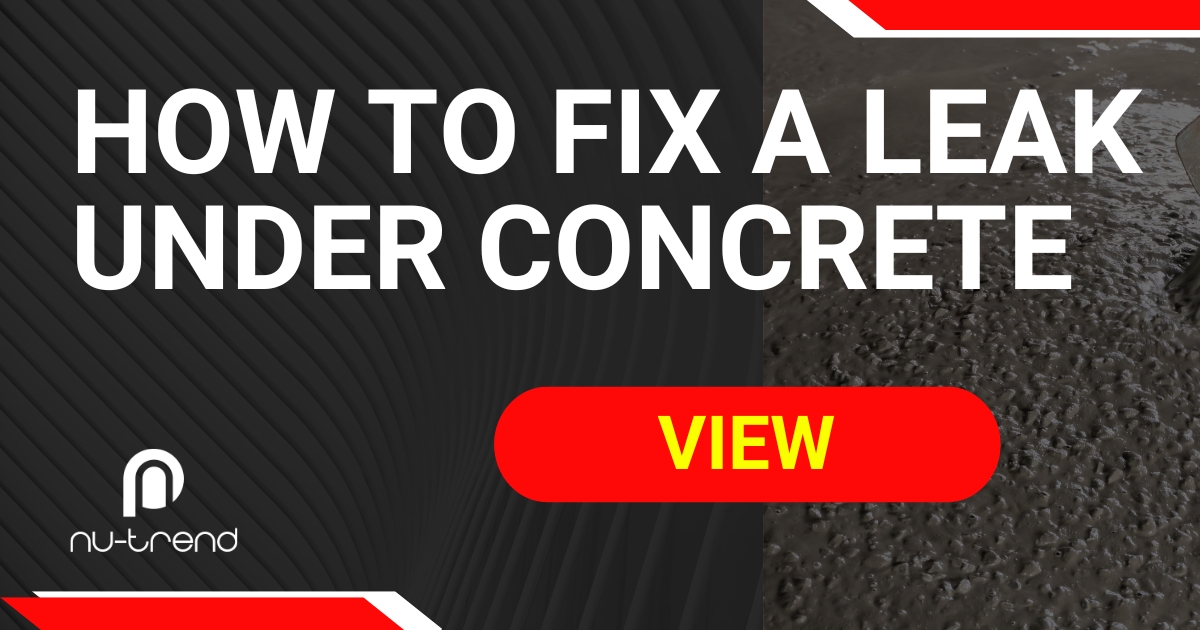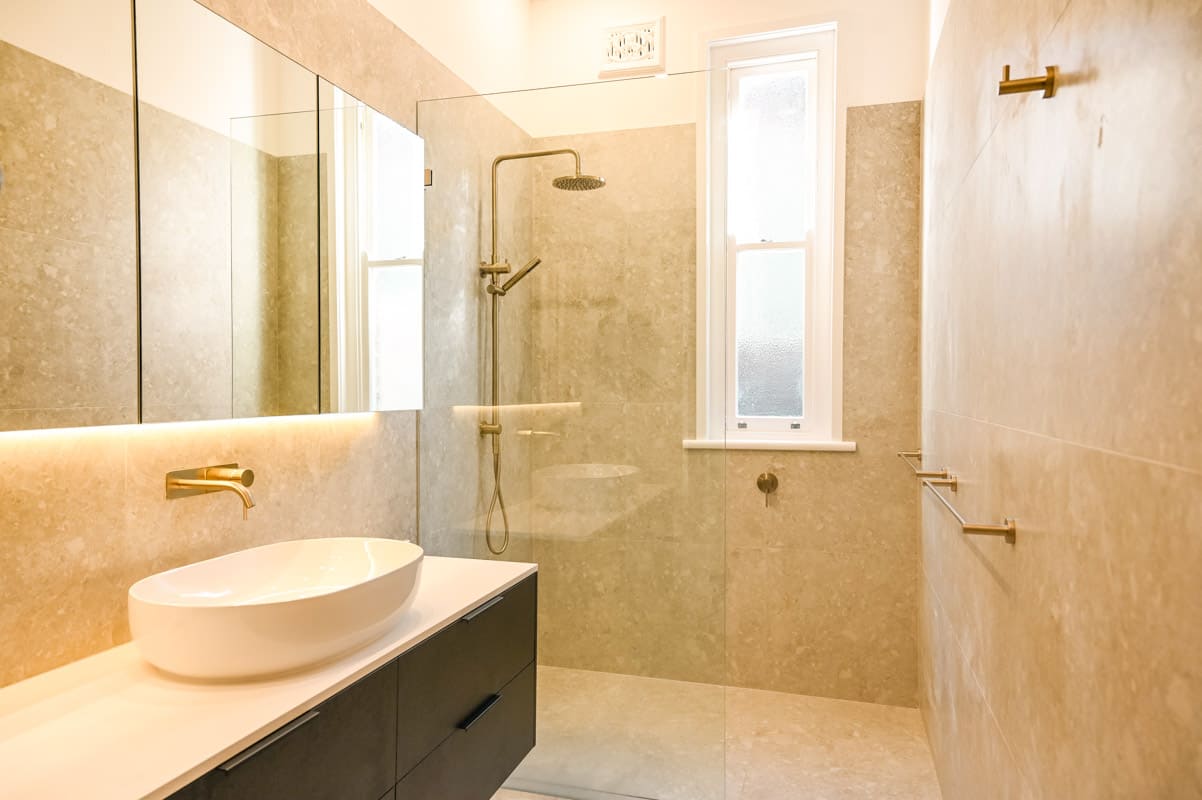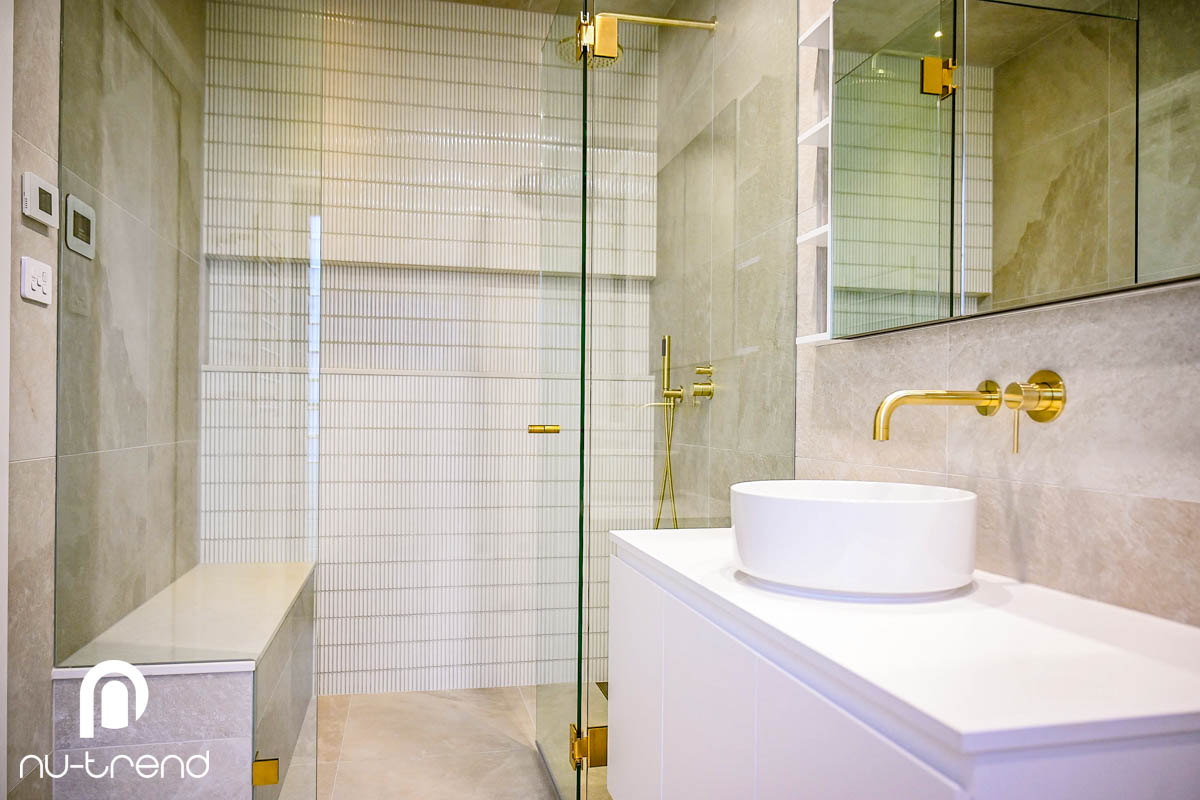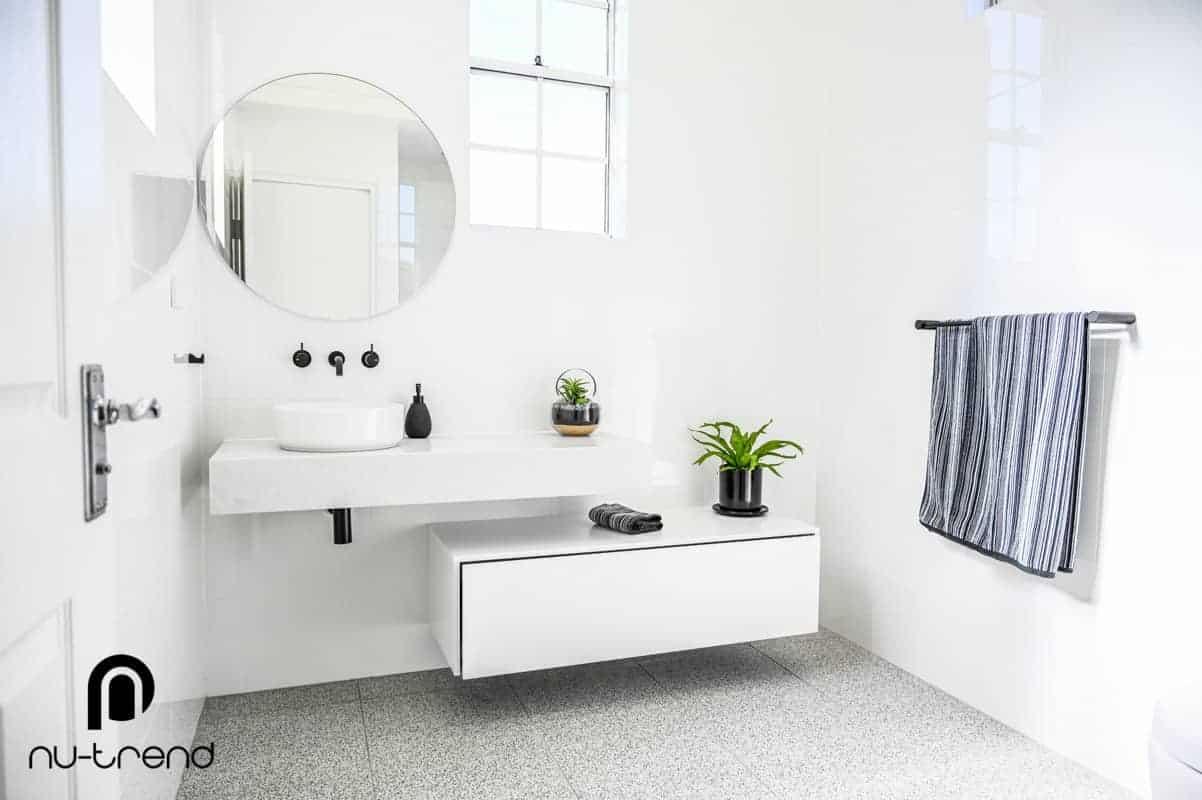How to fix a water leak under concrete in Sydney
Fixing this type of water leak is not a DIY job
- A licensed plumber can detect & fix water leaks
- Water leaks under concrete can be expensive to repair
- Concrete may need to be cut or excavated
- Water leaking under a home can cause structural damage
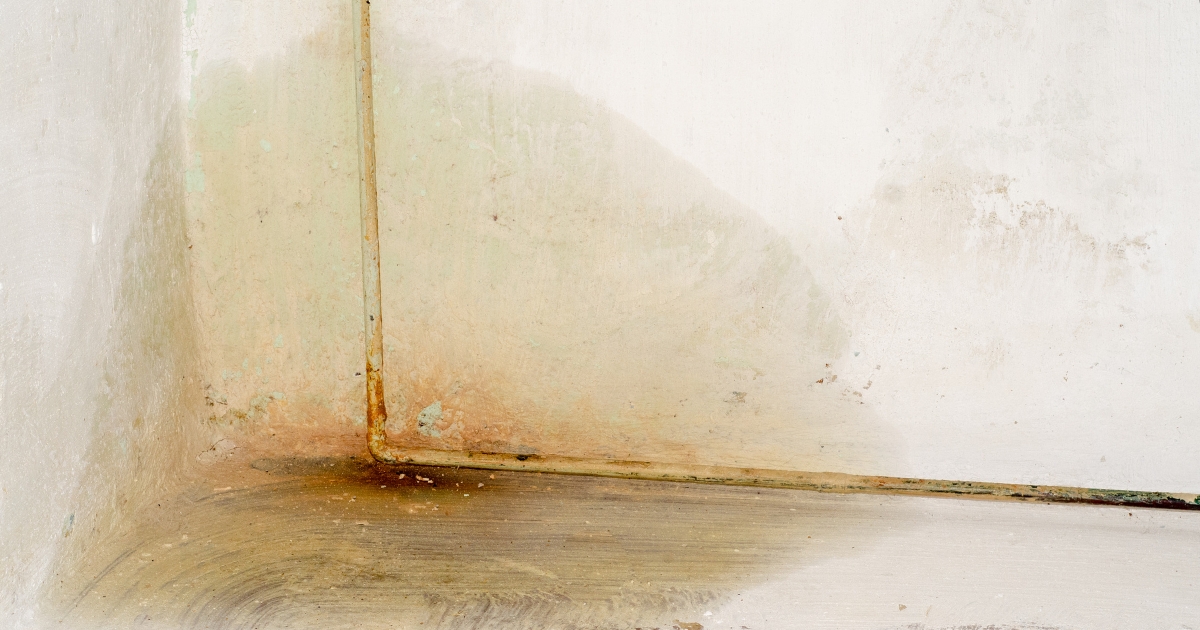
A plumber in Sydney like Nu-Trend can detect and fix a water leak that is under concrete. Most commonly referred to as a slab leak, it is when the water pipes under a concrete foundation for a house or apartment block fail and push water through cracks or gaps in the slab.
In most situations it is when old copper or clay pipes fail due to their age where cracks form that lets water or sewage escape. Water leaking under concrete can happen for the water supply lines or the sewage / drainage lines.
Finding a leak from the high water pressure supply lines are normally easier to locate because water is forced out much faster compared to drainage lines that might leak slowly over time. Depending where the water actually runs a water leak under concrete could be unidentified for a long period of time because it might look like water draining from a neighbouring property or spilt water and therefore keep leaking for prolonged periods.
If it is serious enough, the foundation of the building can be affected dramatically if water causes enough damage. Leaving a water leak of this type under concrete can be costly which is why a licensed plumber should deal with the situation as soon as possible.
Fixing a water leak beneath a concrete slab necessitates a methodical approach to ensure the source is identified and addressed effectively, this is the typical repair process:
1. Leak Detection and Evaluation:
- Inspection: A thorough visual inspection of the affected area is crucial. This may involve identifying visible cracks, moisture stains, or signs of water damage.
- Moisture mapping: Specialized moisture meters can be employed to pinpoint the exact location and extent of the leak under the concrete.
- Non-destructive testing: Depending on the complexity of the situation, techniques like ground penetrating radar or acoustic leak detection may be used to confirm the location and source of the leak without compromising the concrete.
2. Planning and Access:
- Develop a Repair Strategy: Based on the leak’s source and severity, a tailored repair plan is formulated. This may involve isolating the leak, excavating a specific area, or employing specialized injection techniques.
- Access Considerations: The chosen repair strategy will determine the access method. For small, isolated leaks, strategic drilling or core sampling may suffice. Extensive leaks might necessitate partial or even full slab excavation.
3. Leak Repair Techniques:
- Crack Injection: For leaks originating from cracks within the concrete, epoxy or polyurethane resins can be injected under pressure to fill and seal the cracks permanently.
- Pipe Repair/Replacement: When the leak stems from damaged pipes embedded in the concrete, the specific section of the pipe may be isolated, repaired using clamps or patches, or entirely replaced.
- Under-Slab Drainage Systems: In cases of persistent moisture issues or high water table concerns, the implementation of an under-slab drainage system can be considered. This system collects and redirects any water that accumulates beneath the slab, preventing future leaks.
4. Verification and Restoration:
- Post-Repair Leak Testing: Once the repairs are complete, the area is thoroughly tested to ensure the leak has been effectively addressed. This may involve moisture meter readings or a pressurized water test.
- Concrete Restoration: Following successful leak repair, the excavated area (if applicable) is filled with appropriate backfill material and the concrete surface is restored to its original condition.
Repairing water leaks under concrete slabs can be a complex process. Consulting with a qualified plumbing professional with experience in foundation repair and waterproofing is highly recommended. They can assess the specific situation, recommend the most suitable repair approach, and ensure the work is carried out efficiently and safely.
What can cause a water leak under concrete?
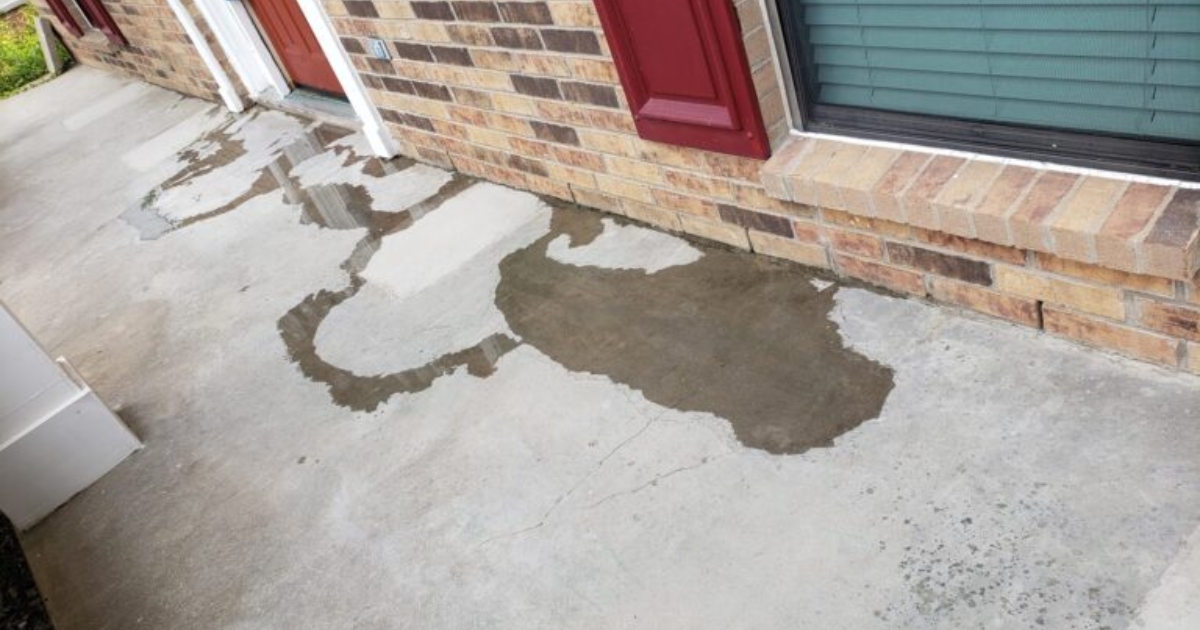
The most common reasons for water to leak under concrete are;
- Pre-damage – when pipes are installed they can be accidentally damaged prior to or during installation. This might seem like a minor issue at the time, but if they are not repaired then they most likely won’t function correctly in the future. Even a small hairline crack could cause a problem later on as water pressure builds up over time within the pipe.
- Poor installation – sounds obvious, but if the pipes are not properly installed in the first place the chances of leaks occurring over time are greatly increased. They might not be in place as required by building regulations or connected properly.
- Ground or foundation shifts – when a structure shifts on the foundation then the pipes can move as well. Pressure on the pipes can also occur when the ground and foundation move over time. The pipes underground are designed to withstand this movement but too much pressure or movement can cause them to fail and then leak.
- Abrasion – pipes will expand and contract when water flows through them which is expected. Although when this happens a a pipe scrapes against another one, the rubbing can lead to them failing. This could be against another pipe, concrete or gravel where it wears the surface that leads to a water leak.
- Corrosion – pipes which make contact with soil may corrode over time especially if they are made out of materials like copper. As the pipe corrodes it loses its strength and can’t contain water which eventually creates a leak. This corrosion can lead to pinhole leaks or complete pipe failure, resulting in water leakage within the slab.
- Improper concrete slab construction: Faulty workmanship during slab construction can lead to gaps, cracks, or voids in the concrete. These imperfections act as conduits for water seepage, especially when exposed to external moisture sources.
- Inadequate waterproofing: Substandard waterproofing membranes or improper application techniques leave the concrete vulnerable to water ingress. This is particularly critical in areas with high water tables or frequent rain.
- Concrete cracking: Concrete naturally undergoes expansion and contraction due to temperature fluctuations. Over time, this movement can cause cracks to develop in the slab. These cracks, if not addressed, can become pathways for water infiltration.
- Soil movement: Sydney’s expansive clay soils can experience significant volume changes due to seasonal moisture variations. This movement can exert pressure on concrete slabs, potentially causing cracks and facilitating water leaks.
- Hydrostatic pressure: Rising water tables or poorly drained soil surrounding the foundation can exert hydrostatic pressure on the concrete slab. This pressure can force water through any weaknesses in the slab, leading to leaks.
What are the indications there is a water leak under concrete
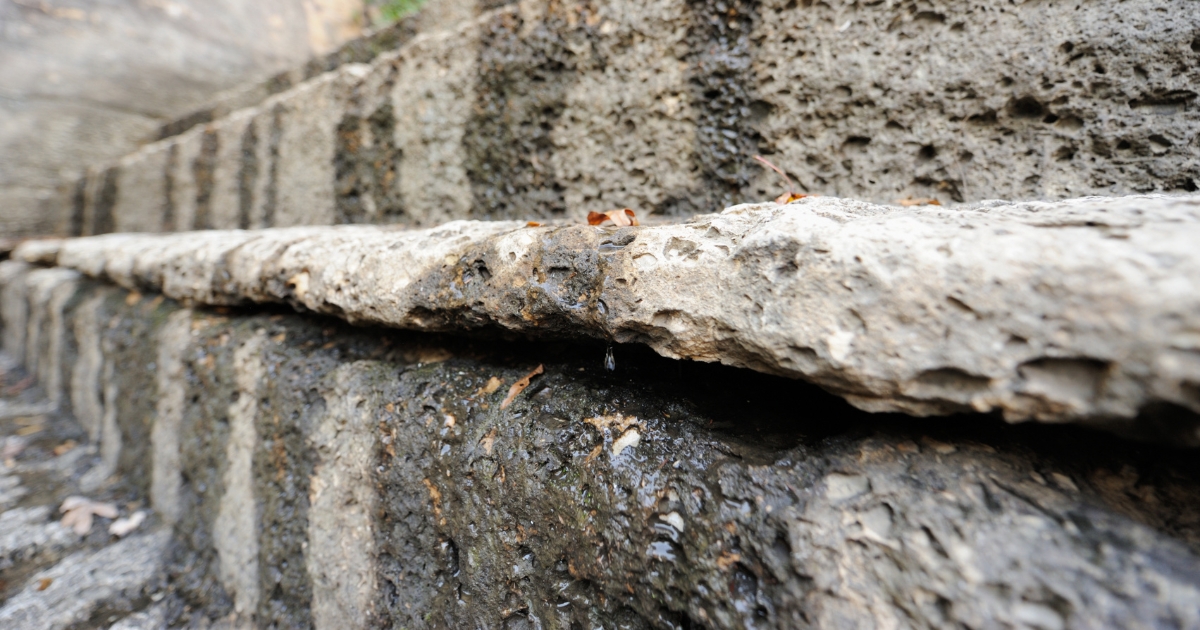
There are some obvious things to indicate where there is a water leak under concrete which include;
- Your water bills are getting higher for no apparent reason even if your day to day usage is similar. If the water bill is higher than usual then a slab water leak can be the reason for this because more water is being used.
- You might hear the sound of water being used even when all the taps are turned off. It will sound like water is flowing or running, even slowly. The water meter might be running even though no taps are being used.
- If you have carpet you might notice that is smells musty or a bit mouldy.
- The carpet is beginning to have a build up of mould or mildew.
- You can see stagnant water sitting on the ground regularly or there always seems to be water in a particular area.
- The water pressure is lower than usual for unknown reasons.
- Visible cracking in your foundation which are always damp or moist
- Stained or damp flooring or carpet
- Visible alteration in soil around home
- Uneven growth in lawn or plants near the home’s foundation
How much does it cost to fix a water leak under concrete?
There is not a single plumber in Sydney, builder, repair contractor or company in Sydney that can give you an accurate cost to fix a water leak under concrete.
It is literally impossible to put a single price on the cost to find & repair water leaking under concrete because it will vary based on the work required for each situation.
Some of the factors that are involved will include;
- Leak detection complexity: Locating the precise origin of the leak can be straightforward or require advanced tools and techniques. More intricate detection methods will naturally increase the overall cost because of the extra time, equipment and diagnosis needed.
- Repair requirements: The chosen repair method, such as simple crack injection or extensive pipe replacement and concrete restoration can significantly impact the project scope of work & therefore the cost.
- Labor and material costs: Plumber rates and the materials required for repairs will influence the final bill depending on the extent of the work needed.
As we mentioned a definitive price cannot be provided without a specific inspection, if you search online you will see cost estimates that include;
- Leak detection: $200 – $530 as an average cost.
- Repair Costs: $800 – $5,000+ which is very broad because so many factors are involved.
Other costs to consider would be;
- Emergency requirement: If it is an emergency leak repair then very often this will incur additional call-out fees and potentially higher hourly rates depending on the time of day it is.
- Property Type: Commercial properties with larger slabs, or complex plumbing systems or working on high-rise apartment blocks may see higher costs compared to residential house repairs.
To obtain an accurate estimate for fixing a water leak under concrete for a property in Sydney you should contact a licensed plumber with experience in slab leak repairs and renovation expertise. They can assess the situation, recommend the most suitable repair approach, and provide a transparent cost quote.
Here are some more free advice articles about getting plumbing or water leaks fixed in Sydney.
Local, licensed & insured
Plumber | Renovator | Drainer | Gas fitter
Nu-Trend is a company in Sydney that has provided plumber and bathroom renovation services since 2009. The Directors Rob and Rick are hands-on, providing a personal service.

Sydney Water
PLUMBER
We work closely with Sydney Water for all plumbing requirements.
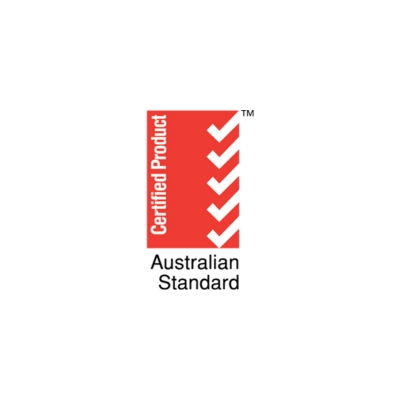
STANDARDS AUSTRALIA AS/NZS3500:2018 Compliant
A renovation business that builds new bathrooms to meet Australian Standards.


